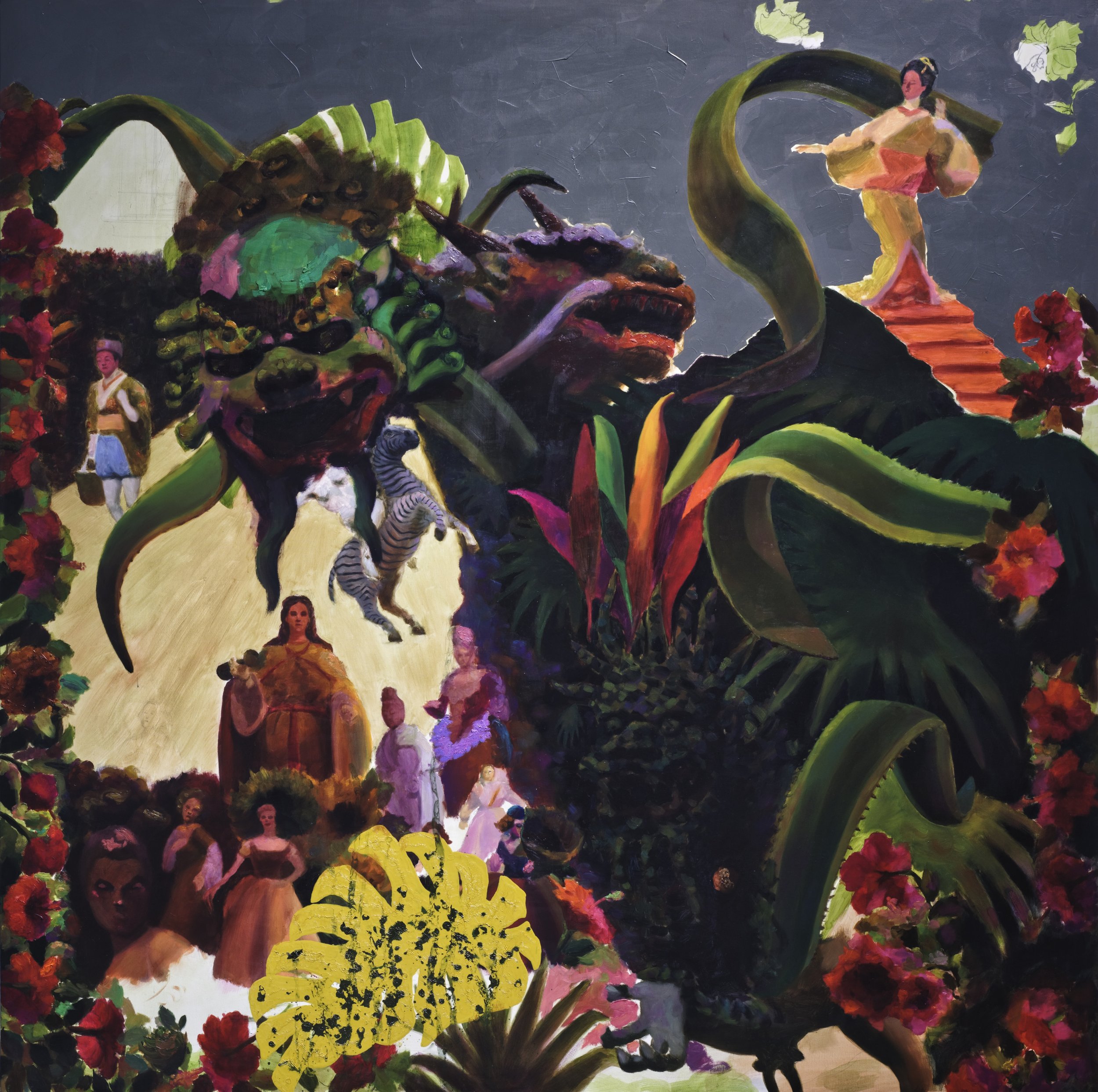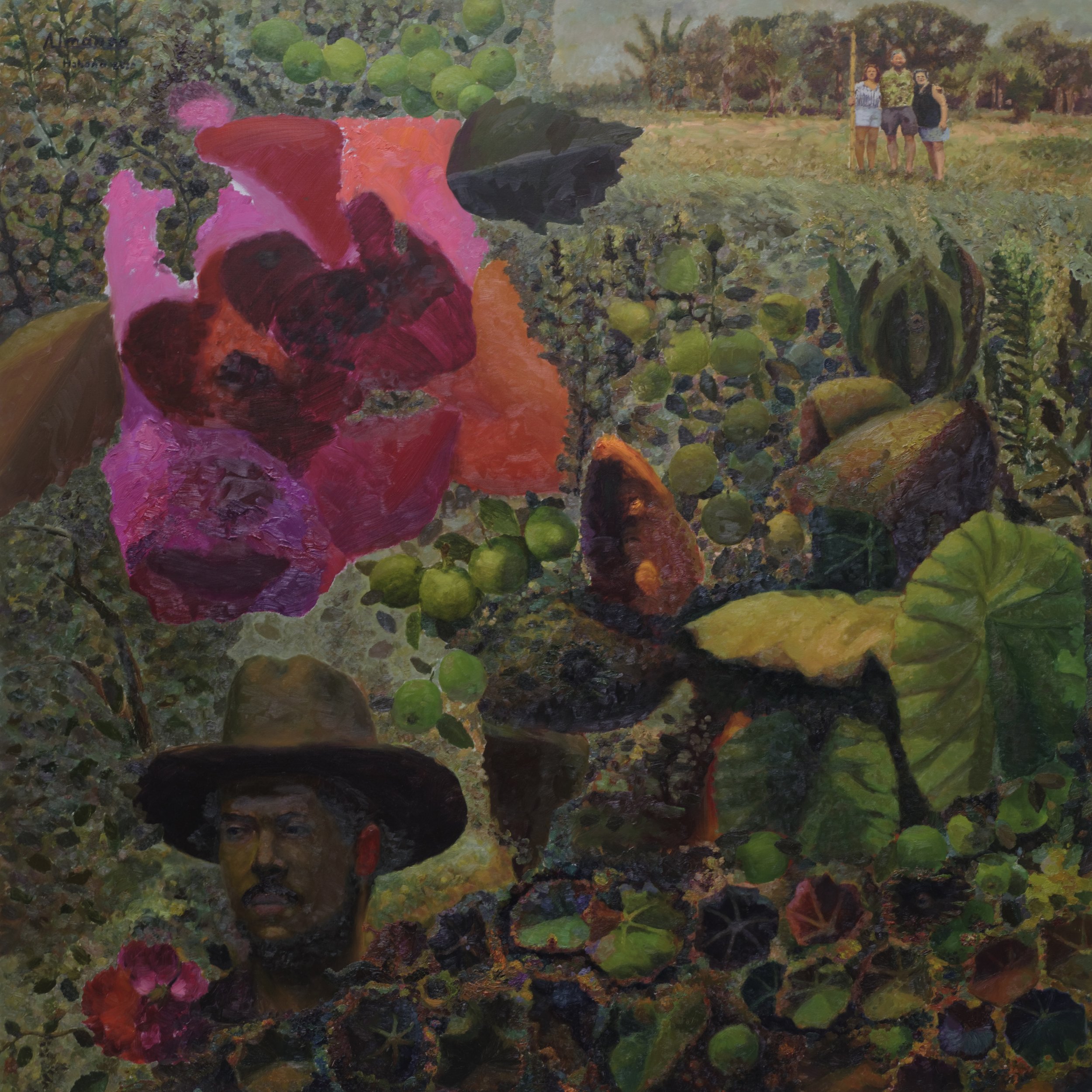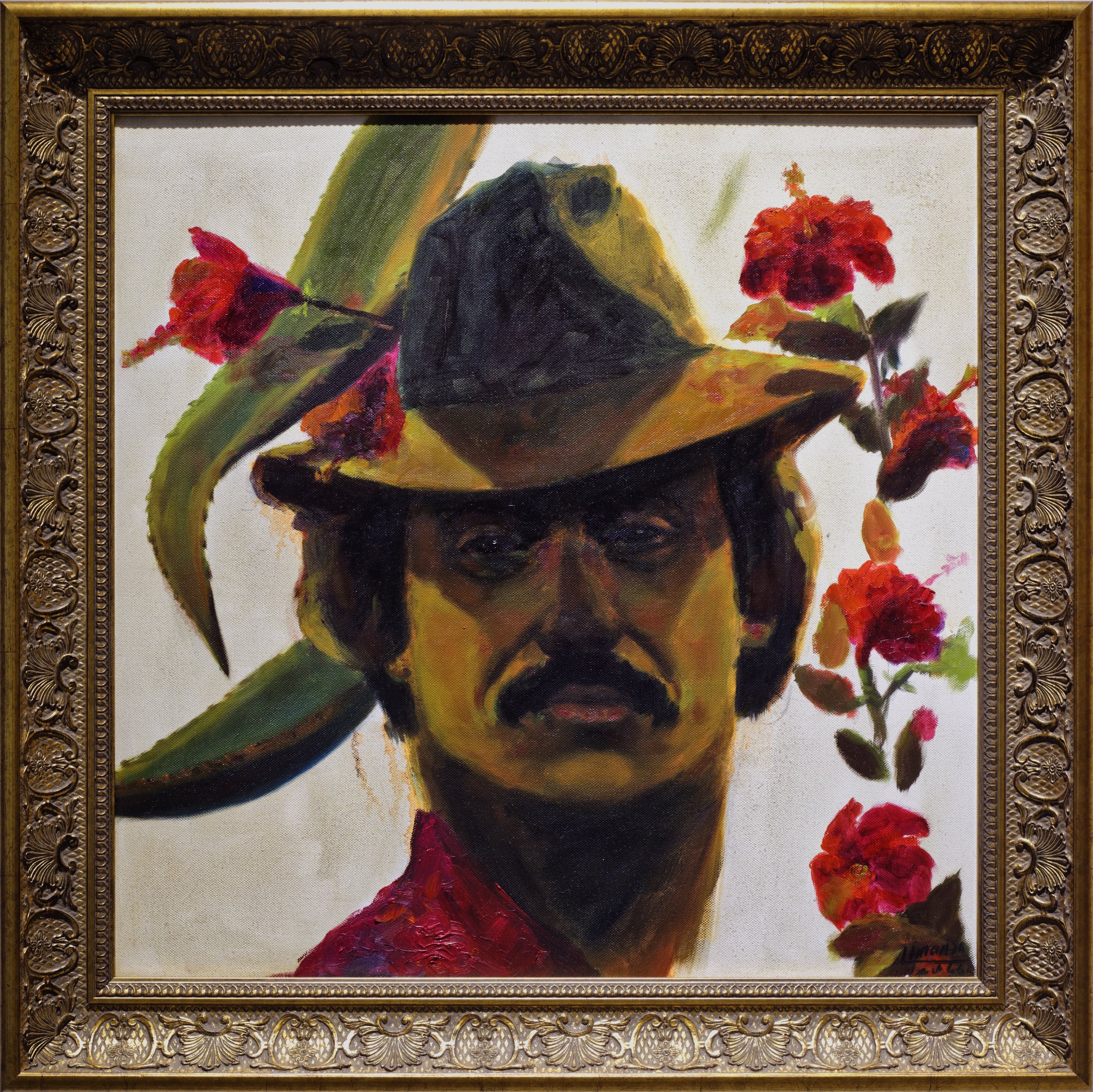“How to show the beauty and pain all in one”
On this occasion, we talk with the Cuban artist Orlando Almanza about the inspirations that drive his artwork, the significance of memories, and the fusion of dreams and the imagery of the Cuban countryside in his creative process.
Orlando Almanza at his studio in Havana1.From Las Tunas to Havana, to Portland... What do these radically different places you have lived in have in common?
Radically different is right! From the sun-drenched landscapes of Amancio Rodriguez, to the vibrant, chaotic pulse of Havana, to the avant-garde enclave of Portland, each holds a special place in my heart.
Fighting Roosters, 12 x12 inches, oil on wooden panel, 2022These places, although seemingly unconnected, converge in my artistic journey. In each of them I find myself feeling very much at home. Being part of the story of each neighborhood is so important to me. I feel a deep connection with the stories, people and places that surround me.
2. Then, mention one thing from each of these places that has shaped the person you are now.
I was born in Amancio Rodriguez, Las Tunas, and grew up exploring the wilderness of el monte; the rivers, the beach, the sugarcane fields. These experiences shaped me into the artist I am today. So many of my stories and pieces come from these memories in nature.
In Havana, I was shaped by the chaotic beauty of the city. The music in the streets, the architecture, the graffiti, my neighbours chatting and gossiping with me each day. It helped me to explore my work in ways I never thought possible and to take risks. How can something be so beautiful and chaotic at the same time, how do I show the beauty and pain all in one?
In Portland, I have come to appreciate my own identity as a Cuban and a Caribbean person. My interest has grown in studying the Taino and African roots of my hometown and being proud of where and who I come from.
3. It appears that some of your paintings take on the form of memories. Is this artistic process a way of freezing time or, perhaps, reconstructing personal or historical narratives?
Absolutely. I have no photos before the age of 12, as my family did not have the resources for a lot of photos.
Therefore, I feel this identity crisis. Without photos the memories are in a constant flux of clarity and ambiguity. Memories tinged with doubt, intertwined with evocative scents, déjà vu, and ethereal sensations. Vivid imagery arises of running through fields of sunflowers, the tactile feeling of mud on my feet at the bottom of the river, dreams of crossing the water on horseback.
Detail from show in Burlington, Photo by Soapbox ArtsThis is why my work has the nature of a shapeshifter, evoking uncertainty as to what is real, what is myth or what I merely dreamt. My work becomes a vessel of these memories, a living, breathing thing.
4. By the way, tell us a little about what you are currently working on; what news can we expect from you in the remainder of 2023?
Currently, I am finishing a large commissioned work for a collector who is based in Ghana. The work focuses on the Ashanti and Akyem kingdoms of Ghana and has been an all-encompassing project for the last few months.
This summer, I will return to Cuba to reconnect with my roots and create some new work.
In the fall, I will be presenting a show in Newport, Rhode Island as well as leading a workshop at the Newport Art Museum and collaborating with the local Latino communities for Hispanic Heritage month events.
I will be introducing some new projects here in Portland soon, so stay tuned!
5. On one occasion, when discussing the panorama of visual arts in Cuba, you mentioned being concerned about the lack of coherence between lived experiences and created artwork. How do you personally approach achieving coherence in your artistic expression on a day-to-day basis?
This was a hard one for me. During my time studying at ISA in Havana, I sought to explore the realm of conceptual and theory based art, striving to create an intellectual connection. However, beneath the surface of these works I felt a profound disconnection, a yearning for a different sort of expression.
It wasn’t until years later, that I understood my truth and strength came from my identity and the stories from my childhood. I discovered this deep connection to the tradition of storytelling, mythology and spiritualism with which I was raised. I found that the more I listened to my own intuition, the more my creative process grew and flourished. This has been especially important as I have begun spending part of the year outside of Cuba.
Everyone has a story to tell that is unique to them. For me, I find authenticity and coherence by journaling and drawing memories from my childhood, reading myths and stories from the region where I am from and always asking myself how the work relates to my experiences and the story I want to tell.
The Resurfacing of Tito Biajaca from the Bottom of the Yáquimo River, 12 x12 inches, oil on canvas, 20226. Which of your pieces do you feel more attached to, and why?
I feel most attached to the works that come from stories and myths I was told as a child, such as:
● The river always stands between the weeds and swamps
● The forbidden romance of Countess Gomez there by the old town of Remedios
● Tito Biajaca half fish half man
● The Devil and the güao plant
7. The connection between the dreamlike and the imagery of the Cuban countryside is another theme that weighs heavily in your body of work. To wrap up, is there any recent dream you had that could potentially become a painting?
I have been having a lot of memories and dreams about summer afternoons when my cousins and I would go to the river.
Some afternoons it would rain, and the people at the river would become exhilarated. They would dance in the waters, swimming and jumping into the depths more vigorously. As is the total and complete embrace of water all around them made them feel safe and childlike.
After these afternoons, people would return to town, climbing barefoot up the muddy hills of the Yaquimo River. Riding their horses home or followed by their loyal dogs.
I look forward to creating a work that encompasses this feeling and moment.
Orlando Almanza
Orlando Almanza (b.1989, Las Tunas, Cuba) pulls us into his dreamworld of memory, myth and loss with ethereal landscapes, portraits and storytelling. His stories take place in the natural world where figures are intertwined with plants, animals and light. The interconnectedness of his work points to the artist's deep dedication to nature, and the unique way it connects with myths and storytelling across cultures. Each painting invites us in, to search for meaning and truth. Almanza received his B.A. in printmaking from the Institute of Superior Arts in Havana, Cuba.
In 2022, Almanza presented a solo exhibition titled “Born by the River'' at Soapbox Arts Gallery in Burlington, Vermont as well as a solo exhibition titled “Un Laberinto en el Estómago de un Cocodrilo” (A labyrinth in the stomach of a crocodile) at ONA Galeria in Havana, Cuba. These exhibitions focused on the myths from the artist's childhood, growing up in the Cuban countryside. Recent honors include Artist Residencies at The Newport Art Museum and at the Sitka Center for Art and Ecology and the addition of one of Almanza’s works to The Hood Museum at Dartmouth College collection. He currently works and resides in Portland, OR and Havana, Cuba.
“My passion and work is to find the visual universe where myths exist and to commit them to memory on canvas.”
Discover Almanza's Artworks Now Available on Our Platform:









